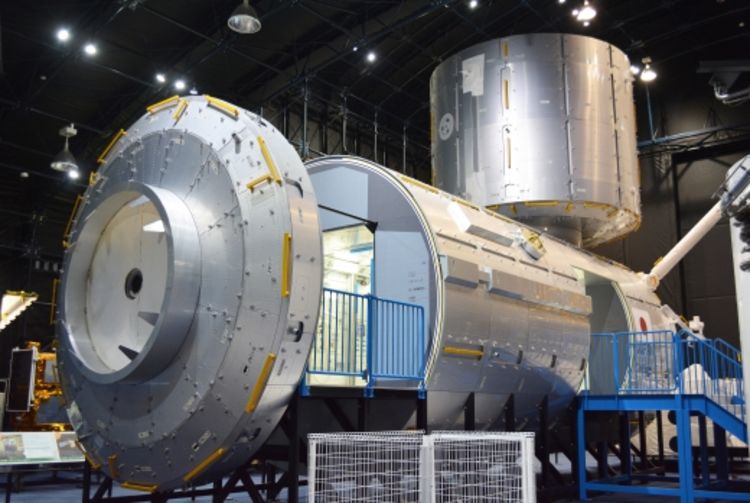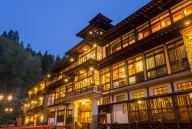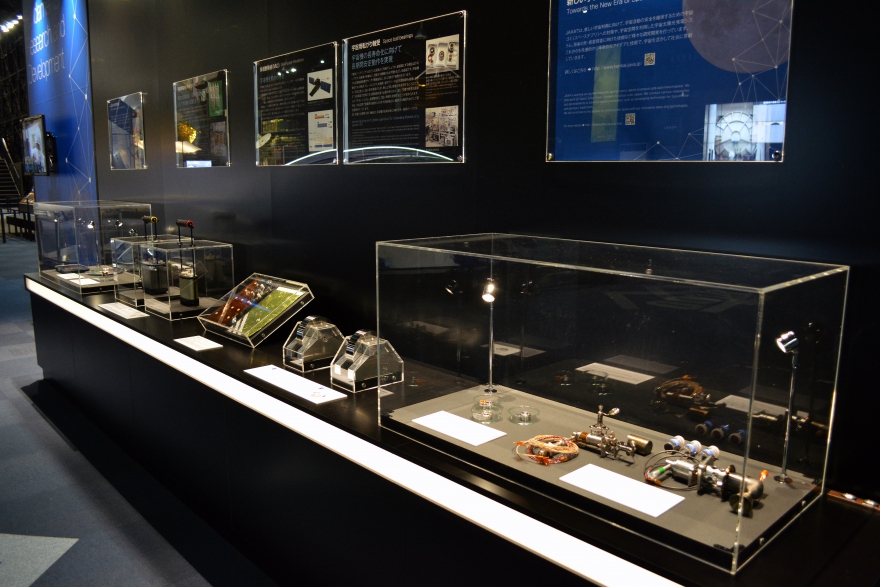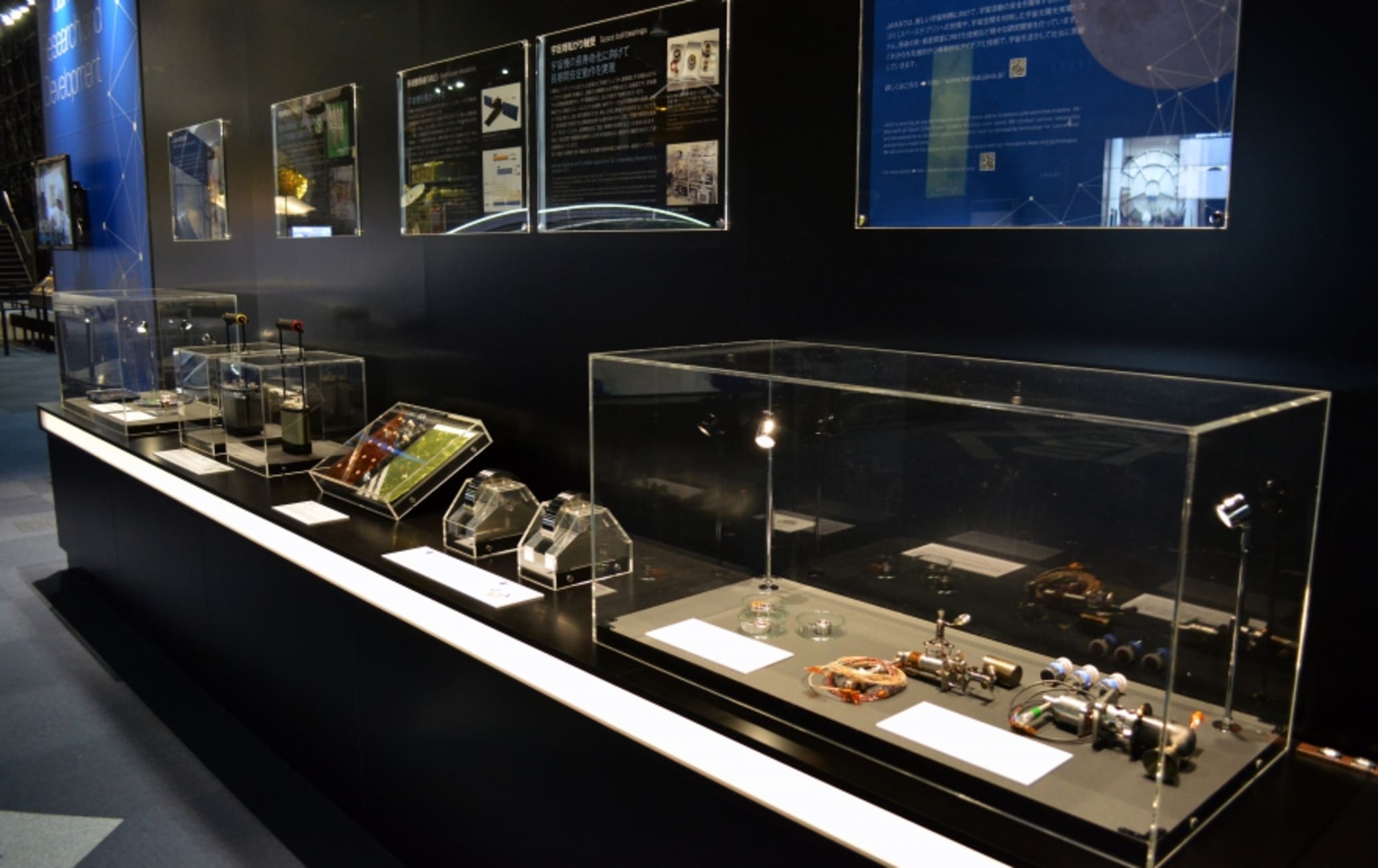(C)JAXA
Erfahren Sie mehr über Japans Raumfahrtgeschichte im Raumfahrtzentrum Tsukuba
Als Zentrale der Japan Aerospace Exploration Agency (JAXA) ist das Tsukuba Space Center für verschiedene Aktivitäten wie Forschung und Entwicklung, aber auch Tests im Bereich der modernsten Raumfahrtentwicklung verantwortlich. Ebenfalls gibt es hier eine Ausstellungshalle, in der Besucher mehr über die Geschichte der Raumfahrt in Japan erfahren können. Außerdem werden Führungen durch die Einrichtung angeboten.
Nicht verpassen
- Eine authentische H-II-Rakete
- Der Space Dome, in dem Teile verschiedener Raumfahrzeuge, Testmodelle für Forschungszwecke und Modelle in Originalgröße ausgestellt sind
- Führungen, um mehr über die Raumfahrt in Japan zu erfahren
Anfahrt
Sie können das Tsukuba Space Center entweder mit dem Zug oder dem Expressbus erreichen.
Wenn Sie mit dem Zug fahren möchten, dann nehmen Sie die JR Linie Joban zum Bahnhof Arakawaoki. Steigen Sie dann in den Kantetsu Bus Richtung Tsukuba University Chuo oder Tsukuba Center ein, um zum National Institute for Materials Science zu gelangen. Von dort brauchen Sie dann nur noch eine Minute zu Fuß. Alternativ können Sie den Tsukuba Express zum Bahnhof Tsukuba nehmen. Dort steigen Sie dann in den Kantetsu Bus Richtung Bahnhof Arakawaoki ein, um am National Institute for Materials Science auszusteigen.
Wenn Sie lieber mit dem Expressbus fahren möchten, steigen Sie am Bahnhof Tokyo am Ausgang Yaesu South in den Bus Richtung Tsukuba University bzw. Tsukuba Center ein. Ihre Haltestelle ist dann Namiki 1-chome.
Japans Zentrum der Raumfahrtforschung
Das Tsukuba Space Center führt verschiedene Projekte wie die Entwicklung von Satelliten, Raketen und Transportsystemen durch. Außerdem werden hier auch Astronauten ausgebildet. Dieses Zentrum der japanischen Raumfahrtforschung befindet sich auf einem rund 53 Quadratmeter großem Gelände in Tsukuba Science City.

(C)JAXA
Rocket Square ist ein Highlight
Wenn Sie sich der Anlage nähern, die in der üppigen grünen Umgebung von Tsukuba City liegt, werden Sie, sobald Sie durch das Haupttor gekommen sind, die H-II-Rakete auf dem "Rocket Plaza" sehen. Die Rakete ist rund 50 Meter lang und hat einen Durchmesser von 4 m. Tatsächlich ist die H-II echt, sie wurde nämlich für Bodentests gebaut. In der Vertikalen ist die Rakete so hoch wie das Gebäude hinter ihr (das Gebäude für integrierte Entwicklung und Antriebstechnik). Schießen Sie hier unbedingt ein Erinnerungsfoto.
Die Speerspitze der Weltraumforschung
Hier werden verschiedene Studien im Zusammenhang mit der Raumfahrtentwicklung durchgeführt. Zu den wichtigsten Projekten gehören: die Entwicklung und der Betrieb von Satelliten, die unsere Augen im Weltall sein sollen, und die Analyse ihrer Beobachtungsbilder, die Nutzung der Weltraumumgebung durch das japanische Modul "Kibo" der Internationalen Raumstation, Training der Astronauten und Förderung ihrer Aktivitäten, die Entwicklung von Raketen- und Beförderungssystemen sowie die technologische Forschung zur Schaffung einer entsprechenden Grundlage. Während einer Führung durch die Anlage können Sie eventuell sogar JAXA-Mitarbeiter sehen, die an diesen Projekten arbeiten.

(C)JAXA
Die Ausstellungshalle Space Dome
Sobald Sie den Space Dome betreten, die Hauptausstellungshalle des Tsukuba Space Centers, werden Sie ein riesiges Modell eines Globus im Maßstab 1:1.000.000 sehen, der "Dream Port" genannt wird. Die Ausstellung beschäftigt sich mit der Geschichte und dem aktuellen Stand der JAXA in ihren verschiedenen Bereichen.
Genießen Sie die Ausstellung
Der Space Dome hat eine tolle Ausstellung, die Sie mit einem englischen Audioguide erkunden können. Es gibt Testmodelle und maßstabsgetreue Forschungsmodelle von Satelliten und Raketentriebwerken sowie ein maßstabsgetreues Modell des japanischen Moduls "Kibo". Besucher können sich auch über die Geschichte der japanischen Weltraumforschung und -entwicklung informieren und Satellitendaten sehen, die zur Umweltbeobachtung der Erde beitragen. Der Museumsladen im Nebengebäude, "Planet Cube", verkauft Souvenirs und weitere Artikel mit Bezug zum Weltraum und zur JAXA.
Geführte Besichtigungstouren
Nach Voranmeldung sind Führungen möglich, die einen Einblick in einige der größten Einrichtungen der japanischen Raumfahrtentwicklung bieten.
Kibo-Betriebskontrollraum
Das Tsukuba Space Center (TKSC) beherbergt den Kibo-Betriebs- und Kontrollraum, der den Systembetrieb für das japanische Modul "Kibo" der Internationalen Raumstation (ISS) durchführt. Der Kontrollraum hält Kibo in einwandfreiem Zustand und unterstützt 24 Stunden am Tag die Astronauten und die Ausführung von Experimenten.
Zeit im Tsukuba Space Center
Der Besuch des Tsukuba Space Centers eignet sich perfekt, um etwas Zeit in Tsukuba zu verbringen. Nehmen Sie sich ein bis zwei Stunden Zeit, um diese faszinierende Einrichtung zu erkunden.

(C)JAXA













































